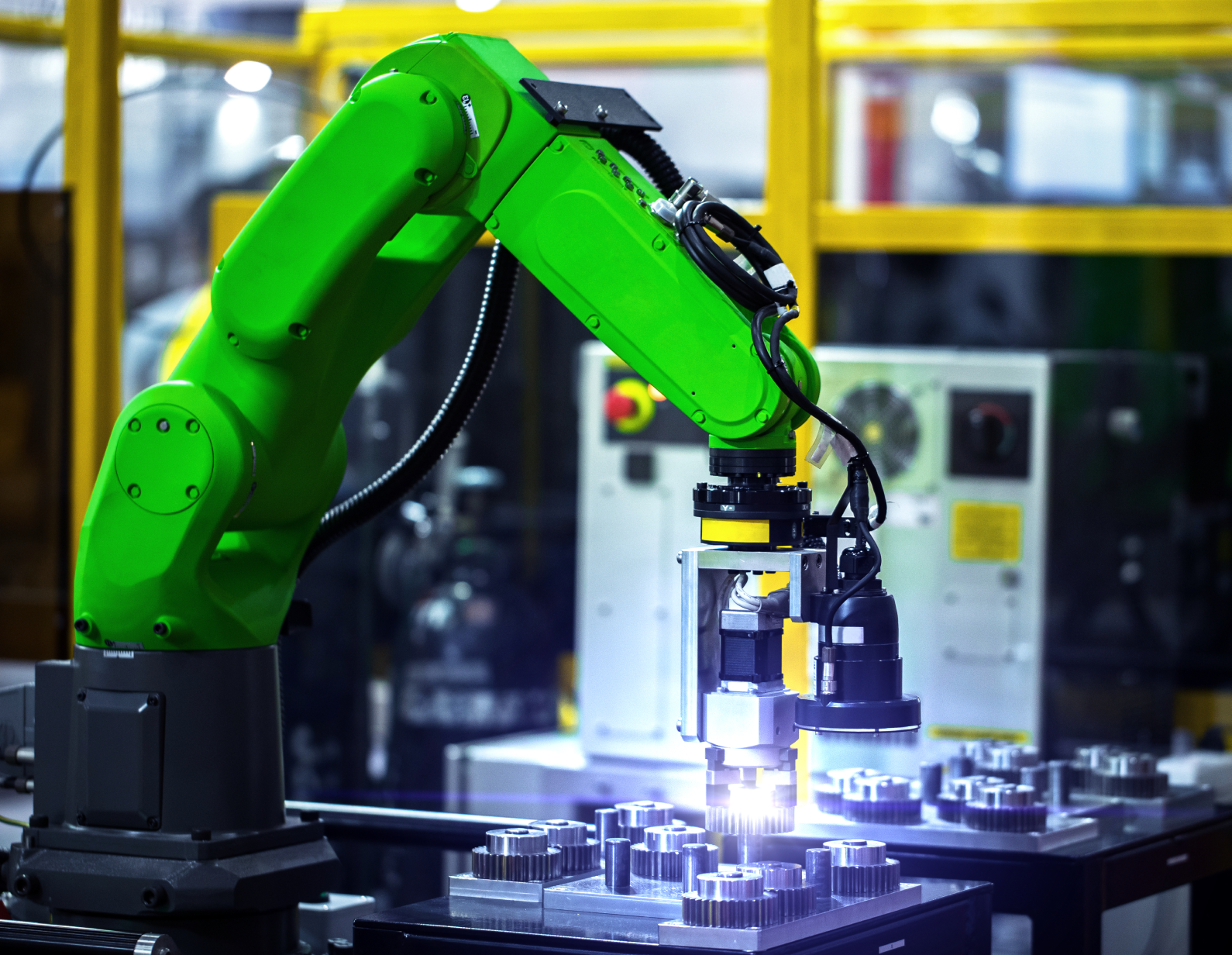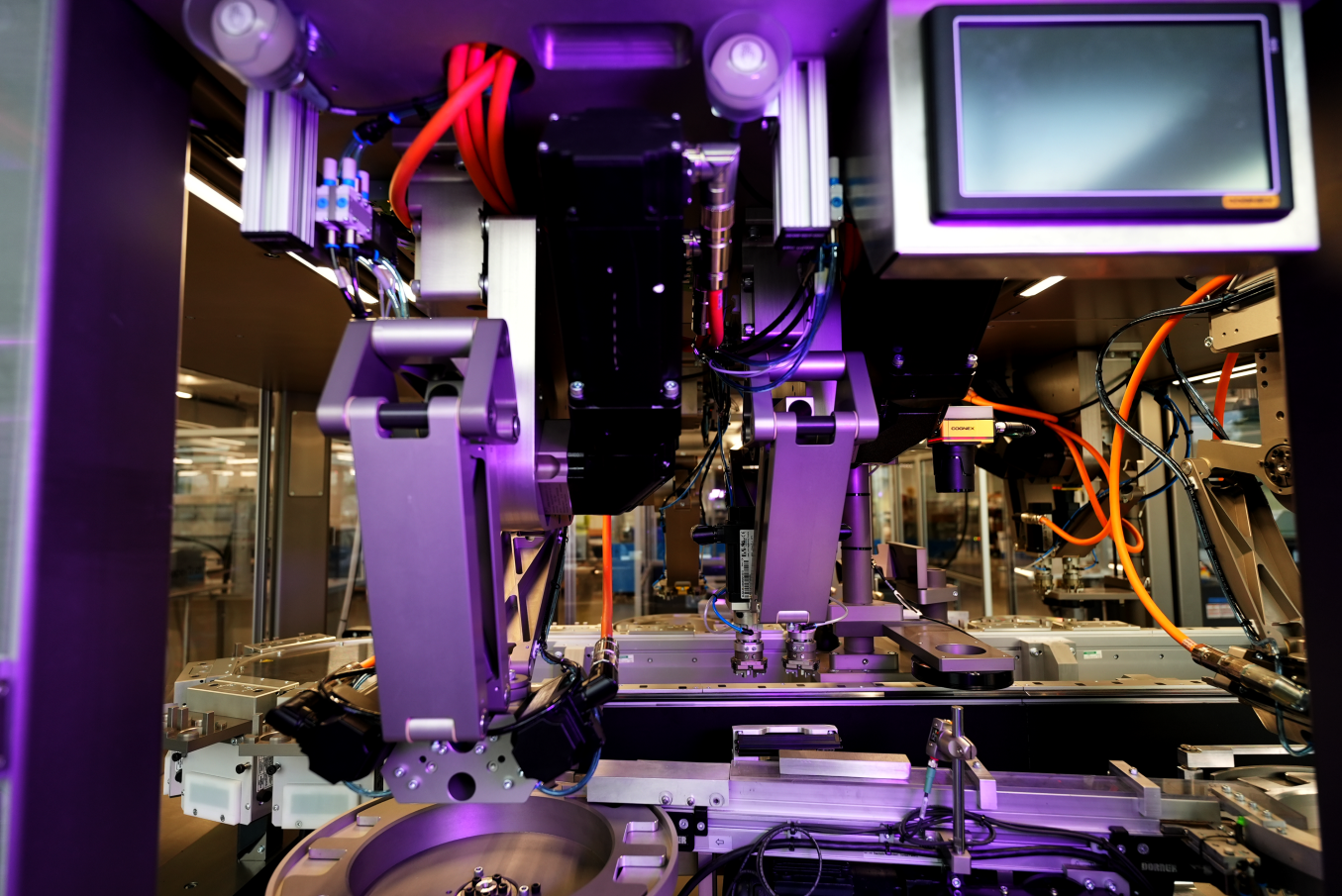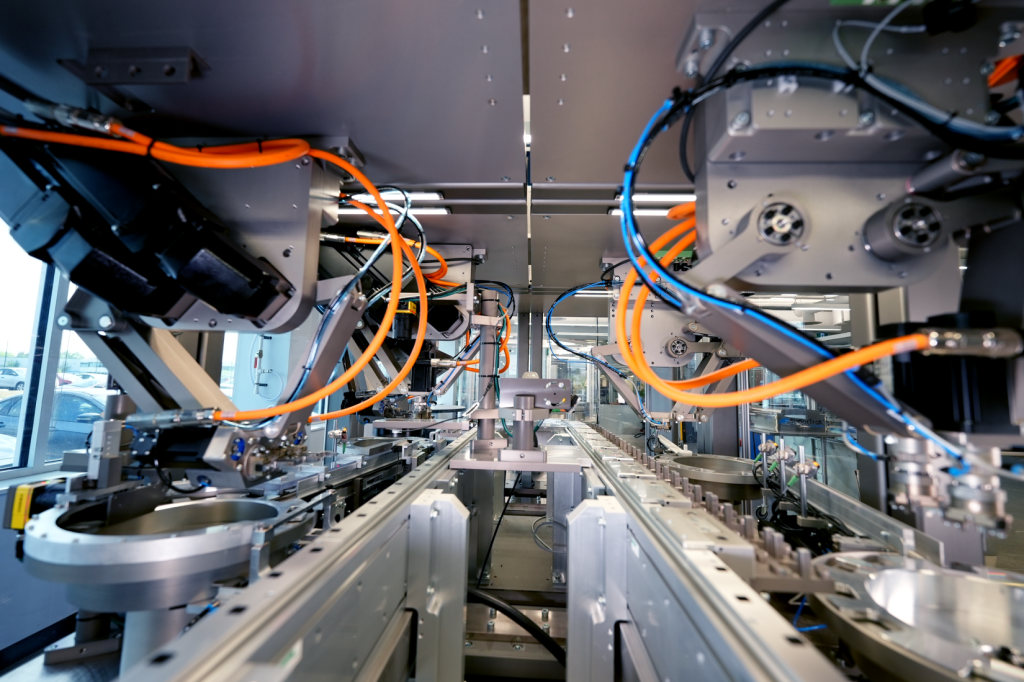The Case for Pre-Engineered Automation Systems
Over approximately the last 30 years, the evolution of automated systems implemented to enable advanced manufacturing has led to the proliferation of the pre-engineered automated work cell/system. In turn, this has enabled significant growth in the global deployment of automated systems throughout all facets of global manufacturing, where virtually any redundant task is automated. In general, the buyer’s incentive to adopt a pre-engineered system is one of, or a combination of, the following:
- The lowest cost of ownership in automation utilization per square meter
- Shorter build and delivery lead times
- Decreased technical risk as the system has a proven performance track record as evidenced by the install base
- Capability of re-deploying the automation to produce multiple product types versus a dedicated part type
Automating redundant tasks utilizing pre-engineered automated systems has been very successful across a myriad of manufacturing processes. Examples include: machining, injection molding, labeling and packaging, and case packing and palletizing. What is it about these examples that make them candidates for pre-engineered automation, and why aren’t there assembly-related examples?
Four Characteristics of Pre-Engineered Automation Systems
There are many processes that lend themselves to pre-engineered automation solutions. The trick is to understand the characteristics of these processes that make them viable candidates. So, let’s take a closer look at four of these characteristics.

Pre-engineered solutions are generally focused on common processes – cutting, molding, filling, weighing, labeling, and bonding. These processes are associated with many products in many different industries. As a result, there is strong supplier motivation to develop solutions that can be deployed broadly with the highest profit. Unique or individualized processes require engineering design effort and are therefore not suitable for pre-engineered solutions.

Pre-engineered solutions tend to be associated with a single value-added process. For example, CNC machines are dedicated to cutting metal. A labeler is dedicated to the application of label to product. A single focus makes it easier to design a standard solution that can be used repeatedly. A process that is clearly defined and understood can have a standardized solution, including hardware and software.

Pre-engineered solutions generally have a single input brought to a single-entry point. Consider the injection molding example in which plastic resin is supplied to the injection unit on the molding equipment. Or the cartoner example, in which a product is supplied to the carton loading area of the cartoner. Any pre-entry processes are not considered within the boundaries of the pre-engineered system – it is assumed that the requisite input will be present at the right location and in the right format. These pre-entry processes may be pre-engineered solutions in and of themselves, but they are independent.

And last, the pre-engineered solution is designed to be redeployable, that is, to accommodate entirely different products by virtue of a couple of engineering techniques:
Interchangeable hardware – The majority of the pre-engineered solution never changes, but through the adoption of interchangeable hardware, customizations can be made to address different form factors. Revisiting the CNC machine example, cutting tools and fixtures can be changed to suit different products. Cartoners are generally designed to handle ranges in size and shape of cartons. The base machine remains the same, but there will be a catalog of options to address glue flap vs tuck flap, or single load vs dual load, etc.
Recipe-driven software – I like to think of control software as having two parts: the behind-the-scenes or under the hood part and the user interfaces part. In the case of pre-engineered solutions, the ‘under the hood’ part remains the same for all products produced on the system. The user interface part allows you to adjust what happens within the system specific to your product. For example, the dispense time, pressure, temperature, etc. can all be changed to deliver a different amount of glue, but still utilize the same gluing system. Similarly, the load pattern for a pallet can be changed on a palletizer in order to accommodate cases of different sizes and weights.

Introducing the Problem Child: Pre-Engineered Assembly Automation
There remains one elusive manufacturing area that the pre-engineered automation solution has not been able to penetrate – assembly process. Considering the previous discussion, it is easy to understand why. We are not talking about a single value-add process or a single input and single-entry point. Yes, the assembly processes associated with the product may be commonly understood, but the way in which they are applied is usually specific to the product and complicated by the nature and number of parts that are being assembled.
Assembly applications also have some unique characteristics that, at first glance, do not appear to make them candidates for pre-engineered solutions. These include production rate, control logic, and process order of operations.
The vast majority of automated assembly systems are viable only at higher production rates. The financial justification is based on the tradeoff between the cost of labor and capital investment. The pre-engineered automated system may be successful for lower run rates, but success is less sure as the throughput requirements increase. The richer these pre-engineered systems are in terms of flexibility and precision, the slower they tend to be in terms of output rate. This is because their versatility typically derives from their incorporation of standard, general-purpose robots interacting with part-carrying pallets ideally suited for less demanding output. These devices not only have speed limitations of their own but are invariably controlled in a way that amplifies inefficiency and restricts throughput.
A robot packaged in a pre-engineered cell is powerful and flexible, but the physical features that make it flexible also tend to limit its speed. Consider first its work envelope, typically designed to be as broad as possible for maximum freedom with respect to workspace design and functionality. Unfortunately, the greater the distance the robot must cover, the more time it needs to complete its cycle. Likewise, for a robot to do a wide range of repetitive, force-bearing manufacturing operations, it must have the requisite strength and durability, but strength and durability require mass, and mass comes at the expense of speed. For the inverse situation, consider a delta style ‘spider’ robot whose low-mass linkages allow it to move at very high speeds, but without the ability to do more than relatively light work.

Closely linked to production rate is control logic. The control methodology used in conventional pre-engineered systems further restricts their throughput. Operations are invariably carried out in sequential, indexed motion, a technique that accumulates non-value-added time. Consider a pick-and-place operation, where each motion from the pallet’s arrival in the station to the robot’s movements to and from the pallet to the pallet’s release for travel downstream is carried out in sequence, with checks along the way to make sure a given motion doesn’t start unless and until the previous motion has been completed. The actual time involved in placing the part at its destination (that is, the value-added operation) amounts to a tiny portion of the overall cycle time. The balance of the time is all non-value-added prep work.
Consider the following analogy: Someone at a train station wants to deliver a package to someone else on an approaching train. First, they wait for the train to slow down and stop as it arrives in the station. After the conductor gives the all-clear, the doors open and it’s OK to board. The first person boards the train to carry out the mission, handing the package to the waiting passenger, and then disembarks and returns to the platform. The conductor signals it’s time to move on, the doors close, and the train slowly accelerates out of the station. The ‘value-added’ operation – the handing of the package to the passenger – takes a mere instant, but the overall time required to complete the operation is much, much longer and is a waste. In a Lean Principle, this is called Muda (meaning wasteful). For maximum efficiency, Muda must be eliminated.
Lastly, assembly processes change from product to product in three major ways, which include the types of processes, the number of processes, and the order in which the processes are executed. Pre-engineered solutions are not intended to execute more than one process – they are focused on a single value-add process. They do offer flexibility with respect to adding or subtracting single processes and varying order of operations as you can reconfigure the individual solutions. Afterward, you can implement change tooling like end of arm tools on robots to accommodate a different part of geometry, but the production rate will remain a limitation.
Fact or Fiction: Pre-Engineered Automation Systems are not Feasible for Assembly Applications
Until now there has been limited success in employing pre-engineered automation systems in an assembly environment. The challenges posed by high production rates and product-specific processes and order of operations have left the assembly buyer relying on custom automation companies and systems integrators. These systems, although reliable and repeatable, are costly and lack the flexibility and adaptability of the pre-engineered system. As products are modified or new products are launched, more custom systems are required, and the buyer is caught in a repeating cycle.
So, do you accept the status quo? Surely there is a solution that leverages the benefits of pre-engineered automation systems in a way that benefits the assembly world.
The Benefits of Known, Standard Systems
Much of the risks associated with a new automated assembly is alleviated when standard equipment is used. The challenge is that typically these standardized systems lacked either flexibility or throughput. Symphoni™ technology breaks this tradition by offering both speed and versatility.
You can use a single Symphoni module to simulate the automation process during the product’s R&D phase. Then, you can add additional modules during clinical trials as production volume increases. When the product is ready to be fully launched into the market, all these modules form the final production equipment. Engineers can also speed up product risk assessments by accessing the automation platform’s standard tools to create:
- Simulations
- Cycle times analysis
- Design of Experiments (DoE)
- Engineering analysis
When you use Symphoni technology, most of your hardware and all your software is standardized. So, the development of the assembly system is sped up as you only need to test the system’s contact tools and software settings. As a result, you can limit your risk, by using well-understood systems, without compromising on speed, product variation, or precision. More importantly, production can meet market demand.









 Contact Us
Contact Us  Subscribe
Subscribe  LinkedIn
LinkedIn  Youtube
Youtube